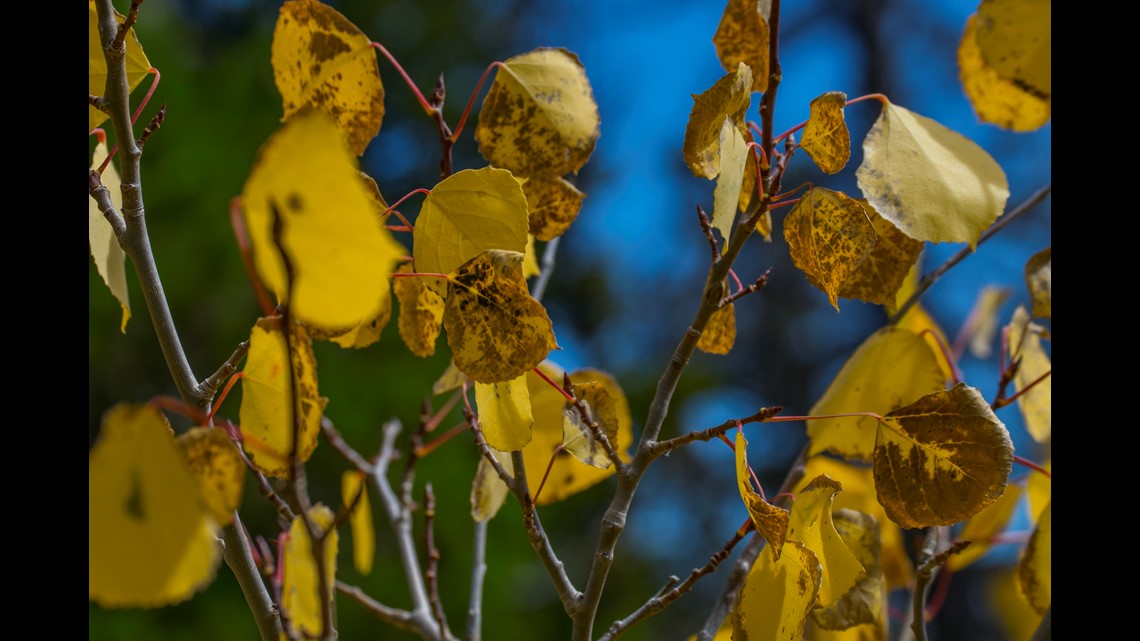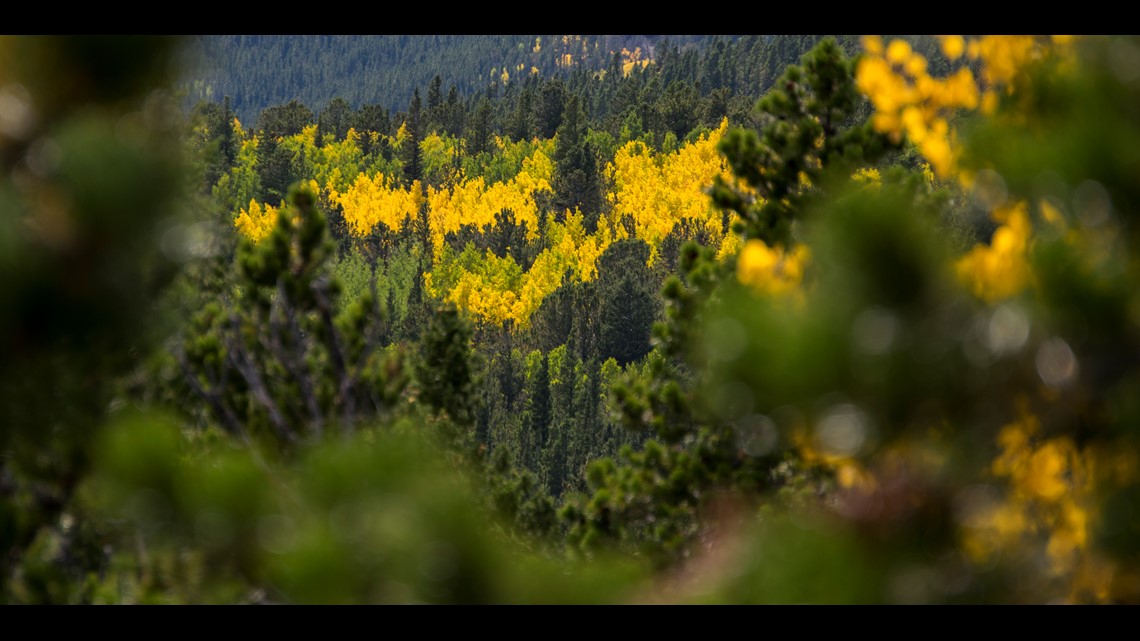COLORADO, USA — Why is the peak of leaf season late this year?
Spring sprung late.
A cold and snowy spring slowed the development of the aspen leaves in Colorado this year. There were still feet of snow falling even on the first day of summer. This simply shifted the growing season.
That snow also provided ample water to the roots, which meant the trees were very healthy. Healthy trees can hold their leaves longer.


How late is the peak?
Normally the peak, which is the week where there are the most gold leaves on the trees at the same time, happens around the Autumnal Equinox. That’s for the aspens in the central and northern mountains above 9,000 feet.
This year, there are far more gold leaves visible on the week after the beginning of fall. The peak is about seven days behind average.
What causes the leaves to change?
The amount of sunlight is reduced in the late summer and early fall to the point there is not enough for photosynthesis to occur. Not only are the days shorter, but the sun angle is lower, meaning the sunlight has to pass through more atmosphere before it reaches the leaves. It is the lack of sunlight that changes the leaves color, not temperature. Although temperatures are also lower due to the same changes in sunlight.
Does the green pigment change color?
No. The green pigment, called Chlorophyll, is actually a mask that covers the true color of the leaves, which in Colorado, aspens are mostly golden yellow. Chlorophyll is used to absorb sunlight and synthesize food and water with sunlight, a process called photosynthesis. When the energy from the sun is reduced in the fall, photosynthesis no longer occurs, so the plant removes its green mask.
Where does the red, and purple come from?
Aspens are mostly just yellow or orange, which are pigments already in the leaves from the time they bud, but other trees in Colorado can change to a red or purple color. These pigments are called anthocyanins. These colors are impacted by temperature and moisture, as well as sunlight, so they can vary much more season to season compared to aspen leaves.


How does temperature affect the leaves?
While temperature doesn’t impact the timing of the leaves change, it does play a major role in how vibrant the colors are. Warm sunny days and cold nights can make those colors really pop. This is especially true for the reds and purples, as they are thought to be created as a sort of an anti-freeze by the leaves.
A freeze can damage the leaves and cause them to drop from the tree quicker.


What are the dark patches and spots on the leaves?
It is mostly a mix of fungal leaf spots (dark black areas), and frost damage (brown patches). These leaves are mostly just in isolated and small areas that are not affecting the color show overall. Drought damage also looks similar to frost damage.


How does this year compare to the last couple of years?
Even though this year’s peak is a little later than normal, the display is excellent. Large groups of trees are all changing color at the same time.
The 2018 season started a little earlier than normal due to extreme drought. As a result, trees varied the times in which they changed, so there was never a really identifiable peak.
In 2017, the leaves were healthy, but still had a gradual change and there were also several high wind storms that blew leaves off the trees early.


If I miss the peak, is there anything left?
Yes, the peak is just the time with the most leaves. It’s not like all the leaves hit the ground right away. After the peak has passed, there are still billions of leaves to be seen. The peak is the best though.
The southern mountains, and elevations between 7,000 and 9,000 feet, peak after the higher elevations, and then there is always a good show in places below 7,000 feet in some of the more urban areas after that.
SUGGESTED VIDEOS | Science is cool

